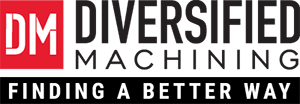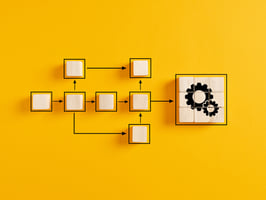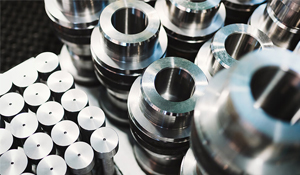Optimize Mechanical Assembly Processes for Improved Efficiency and Cost Savings In the fast-paced...
How to Outsource Mature Products with an Effective BOM
Moving Forward Efficiently with a Legacy Bill of Material
There are many catalysts that cause a vertically integrated company to consider outsourcing manufacturing content. It can be cost related, or time to market driven, or just a change in the senior management philosophy. The task of outsourcing manufacturing is usually assigned to the supply chain management team, but generally also includes input from the quality and engineering departments before execution.
Let’s assume, for the sake of discussion, that the product is a high-tech piece of equipment that is made up of printed circuit boards (PCBs), a sheet metal enclosure, precision machined parts, and wiring content. The challenge is to break the construction of the equipment into unique electro-mechanical sub-assemblies that are logical components conducive to manufacturing outsourcing. Once this is determined, what type of vendor should you consider to quote the content?
(PCBs), a sheet metal enclosure, precision machined parts, and wiring content. The challenge is to break the construction of the equipment into unique electro-mechanical sub-assemblies that are logical components conducive to manufacturing outsourcing. Once this is determined, what type of vendor should you consider to quote the content?
Pragmatics of Picking a Vendor
Logic will tell you that you should try and follow either the highest dollar value of the components or the critical functionality of the device. For instance, if the nucleus of the device requires complex PCBs, the lead vendor may be a contractor who can build high complexity PCBs. If the sheet metal or precision machined parts are particularly complex or expensive, the lead vendor may be a metal shop; and if the wiring is complex or has critical performance requirements, then you may want engage with a cable and harness manufacturer. For the most part, these lead vendors can coordinate all the other “less critical” content through their established supply chain.
Once you have thought about who you should consider for your manufacturing outsourcing partner, let’s look at other considerations and their impact on your decision process. One concern is whether the directive will include existing products or only new products. Each of these represents their own unique challenges.
Mature Products
When outsourcing manufacturing for existing “mature products,” there is a significant chance that the bill of materials (BOM) structure within the manufacturing resource planning (MRP) system is “flat,” which poses challenges for effective outsourcing. This flat format fails to identify specific sub-assemblies within the overall system that could be viable candidates for outsourcing. To address this, engineering or manufacturing teams need to define these sub-assemblies and create a detailed documentation package, including a top-level fabrication drawing and a focused BOM containing only the relevant components. Additionally, the MRP system must categorize all items as “buy” or “make” to avoid duplicate orders. This process demands considerable internal resources, and often companies choose not to allocate engineering efforts to mature products, thereby excluding these items from potential outsourcing opportunities.
Outsourcing Manufacturing
If the decision to outsource only includes new product introductions (NPI), there still needs to be an effort made by engineering to structure the BOM so that it is multi-level, and identifies content that is conducive to outsourcing. Once the sub-assemblies are identified, fabrication drawings and BOMs must be developed for each sub-assembly. The challenge is to be able to anticipate the buying power, and the level of automation that will be available at the contract manufacturer—and allow flexibility in both content and manufacturing methods. This will allow the buyer to take advantage of this competitive advantage, while still maintaining functional control over the system level configuration. Many companies who outsource for the first time are paranoid about keeping control over the system configuration, and end up imposing severe restrictions on BOM content and assembly process, thus limiting the opportunity to take advantage of the potential cost reductions available through outsourcing.
Reduce the Quantity of Parts
When outsourcing sub-assemblies, one significant advantage is the ability to significantly reduce the quantity of part numbers you need to source. For instance, instead of managing hundreds of individual parts, companies can streamline their operations and focus on, perhaps, five key sub-assemblies, simplifying procurement and inventory management. This reduction helps minimize administrative burden, while facilitating better supplier relationships by consolidating orders with fewer vendors.
source. For instance, instead of managing hundreds of individual parts, companies can streamline their operations and focus on, perhaps, five key sub-assemblies, simplifying procurement and inventory management. This reduction helps minimize administrative burden, while facilitating better supplier relationships by consolidating orders with fewer vendors.
By adopting a structured, multi-level BOM, OEMs can clearly identify which components can be grouped into sub-assemblies for outsourcing. This allows for increased efficiency in the supply chain, as fewer part numbers lead to lower complexity in sourcing, inventory tracking, and quality control processes. Additionally, simplifying the BOM in this manner helps manufacturers respond more effectively to changes in demand and reduces lead times, ensuring that production schedules remain uninterrupted. Ultimately, this streamlined approach to part sourcing can lead to significant cost savings and improved operational effectiveness, empowering OEMs to focus on delivering high-quality products in a competitive market.
Decades Make the Difference
We’ve been at this for a long time—with decades of combined experience at the table. We understand what OEMs need, and we deliver. We know a thing or two about how to effectively work through the so-called “BOM conundrum” (flat/single-level/all-inclusive customer BOMs that were originally structured to support top-level, in-house OEM manufacture).
The complex challenges of managing OEM outsourcing have helped us form successful strategies over the years:
- Sharp instinct
- Ever-expanding comprehensive knowledge base
- Methodology to meet these challenges
Especially with complex assemblies, through a lens for design-for-manufacturing (DFM), we typically develop and document separate optimized rev-controlled sub-assemblies contained within a more complex upper-level assembly, and developing a corresponding rev-controlled documentation package for the upper-level assembly into which these separate sub-assemblies are then integrated (multi-level BOMs, drawings, and manufacturing process documentation, which also captures all required tooling, visual aids, inspection points, test requirements, test programs, etc.).
This approach enhances understanding for operators and inspectors by breaking down what could be a complex assembly into manageable, clearly defined sub-assemblies. These sub-assemblies can be manufactured, tested, and inspected separately before being integrated at a later stage to create the final assembly.
The benefits for you:
- Enhanced efficiencies
- Reduction of non-conformities throughout the process
- Heightened overall quality
- A reliable and competitive solution
So, bring us your BOMs, in whatever state they are in. We’ll review all your documentation, handling all the intricacies for you. We love taking on your projects! Diversified Machining will ensure a successful launch that aligns with your all your requirements.
Why Diversified Machining
Designing for manufacturability is crucial for achieving optimal results in precision machining. Collaboration, communication, integrity, and a thorough understanding of machining processes are key to successful DFM implementation or a new product introduction (NPI). Embrace the DFM mindset—we do at Diversified Machining—and you will unlock new possibilities in product development while maintaining cost-effectiveness and high-quality standards.
Good luck with your outsourcing and BOM-related projects! Contact us when you are ready to start your next outsourcing project; we’d love to partner with you. We look forward to hearing from you.



